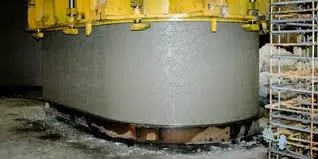sep . 07, 2024 08:12 Back to list
OEM Sand Casting Services | High-Quality Custom Metal Parts
Understanding OEM Sand Casting A Comprehensive Overview
Sand casting, also known as sand mold casting, is one of the oldest and most widely used manufacturing processes, particularly in the production of metal parts. It involves creating a mold from sand and then pouring molten metal into that mold to create various components. When it comes to OEM (Original Equipment Manufacturer) applications, sand casting holds a significant position due to its versatility, cost-effectiveness, and ability to produce complex shapes.
The Process of Sand Casting
The sand casting process begins with creating a pattern, typically made from metal, plastic, or wood, which reflects the final product's shape. The pattern is then placed in a sand mixture, which consists of fine sand, a bonding agent (like clay), and water. This mixture is compacted around the pattern to form a mold. Once the mold is set, the pattern is removed, leaving a cavity into which molten metal can be poured.
After the metal has cooled and solidified, the mold is broken apart to retrieve the finished part. This method allows for a high degree of flexibility with respect to the types of metals that can be used—common choices include aluminum, bronze, iron, and magnesium. The process is capable of producing parts ranging from a few grams to several tons, making it suitable for various applications.
Advantages of OEM Sand Casting
1. Cost-Effective For small to medium quantities, sand casting proves to be economically viable. The materials required for rendering molds are relatively cheap, and the process does not demand extensive retooling.
2. Material Versatility OEM sand casting can accommodate a wide range of metal alloys. This capability is crucial for OEMs that need specific material properties for their components.
oem sand cast

3. Complex Shapes and Sizes Sand molding can produce intricate designs with internal features that may be challenging to achieve using other manufacturing methods. This ability is particularly essential for OEMs that require bespoke solutions.
4. Rapid Prototyping The process allows for quick changes in design, and patterns can be modified using computer-controlled systems. This rapid prototyping capability helps OEMs bring products to market faster.
Applications of OEM Sand Casting
Sand casting finds application across various industries including automotive, aerospace, energy, and consumer goods. In the automotive sector, it is frequently used to create components like engine blocks, cylinder heads, and other intricate parts. The aerospace industry benefits from sand casting for producing lightweight yet strong components that meet strict regulatory standards.
Additionally, OEMs often rely on sand casting for products requiring high strength-to-weight ratios, as well as for unique components that cannot be manufactured efficiently through other means.
Conclusion
In the realm of OEM manufacturing, sand casting stands as a time-tested method that melds tradition with modern efficiency. Its advantages in terms of cost-effectiveness, material versatility, and design flexibility have solidified its role as a preferred technique for producing complex components. As technology continues to evolve, so too will the capabilities of sand casting, ensuring it remains an integral part of the manufacturing landscape for the foreseeable future. Whether for small batches or large-scale production, OEM sand casting is poised to meet the diverse needs of various industries, delivering precision and quality in every cast.
-
Centrifugally Cast Iron Water Main Pipe | Ductile Iron Solutions
NewsAug.24,2025
-
Durable Cast Steel Concrete Pipe Mold Bottom Rings & Base Trays
NewsAug.23,2025
-
Centrifugally Cast Iron Water Main Pipe for Reliable Mains
NewsAug.22,2025
-
Durable Centrifugally Cast Iron Water Main Pipe
NewsAug.11,2025
-
Centrifugally Cast Iron Water Main Pipes for Reliability
NewsAug.10,2025
-
High-Quality Centrifugally Cast Iron Water Main Pipes
NewsAug.09,2025


